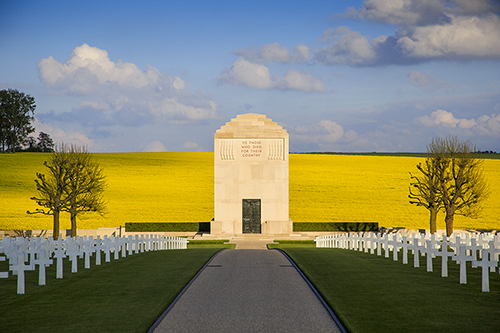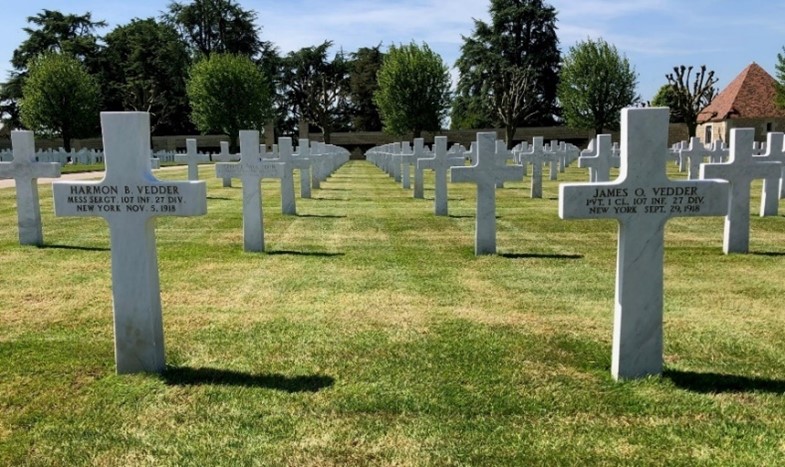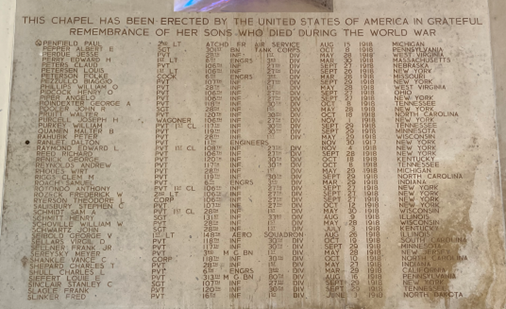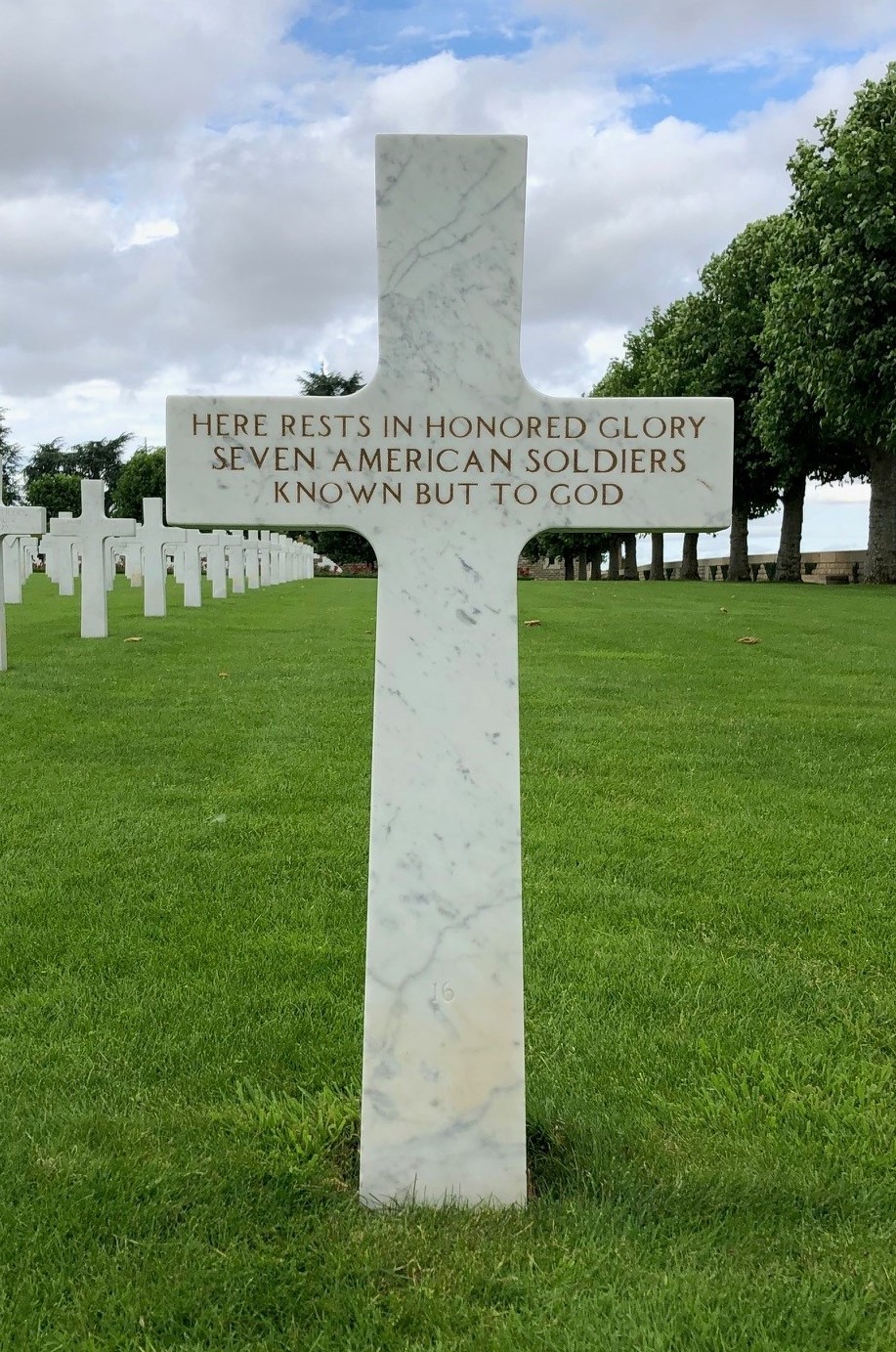Five things you may not know about Somme American Cemetery
The American Battle Monuments Commission’s (ABMC) Somme American Cemetery is located in the small French village of Bony, in the Hauts-de-France region. How well do you know this site? Here are five things you may not know about Somme American Cemetery.
The first exhumation
In late December of 1920, Somme American Cemetery was the first cemetery to exhume the remains of service members for repatriation. After the two world wars, the families of fallen American service members had the option to either repatriate the remains of their loved ones or lay them to rest at U.S. military cemeteries abroad under the eternal care of ABMC. Approximately 40% of families during World War I opted for their service member to be buried overseas, alongside their brothers-in-arms.
Five sets of brothers
For many years it was believed that Somme American Cemetery only had four sets of brothers buried within its grounds. But in 2022, a fifth set of brothers was discovered when a cousin of Pvt. William Dunlap and Pvt. Felix Dunlap came to visit them at the site and explained the relationship between them to the ABMC team. Three of the five sets of brothers are buried side by side.
A single rosette
There is only one bronze rosette on the Wall of the Missing at Somme American Cemetery. It indicates Pvt. Ranlet Dalton was recovered and identified. When it happened in 1955, his family was given the same options that were offered during World War I—they could either repatriate his remains to the U.S. or have him buried at an ABMC site. They chose to inter his remains alongside his fellow service members, making Dalton’s burial quite unique as he has both a headstone at Somme American Cemetery and his name on the Wall of the Missing.
Many service members buried or memorialized at Somme American Cemetery were from Gilded Age families. Amongst them were 1Lt. George V. Seibold as well as MSgt. Harmon Vedder and Pfc. James Vedder. Their mothers, Grace Seibold and Effie Vedder, founded the Gold Star Mothers and pushed for the creation of the Gold Star Mothers’ Pilgrimage—a U.S. government program that paid the travel expenses to the grave sites for mothers and widows whose sons and husbands had died overseas. In addition, Effie Vedder also helped to rebuild the area around our site.
One headstone, seven sets of remains
Of the more than 1,800 burials at Somme American Cemetery, 138 are unknown. But one of these headstones is particularly unique among them, as it is the final resting place of not one, but seven unknown service members. It also happens to be the last burial at Somme American Cemetery in 1972.
The ABMC’s mission is to honor the service of the Armed Forces by creating and maintaining memorial sites, offering commemorative services, and facilitating the education of their legacy to future generations. It was founded in 1923 following World War I and its 26 cemeteries and 31 monuments honor the service men and women who fought and perished during World War I (WWI), World War II (WWII), the Korean War and the Vietnam War, as well as some who fought during the Mexican-American War.
Those sites are a constant reminder of Gen. John J. Pershing’s promise that “time will not dim the glory of their deeds.”
Sources:
Somme American Cemetery team
Historical Services





